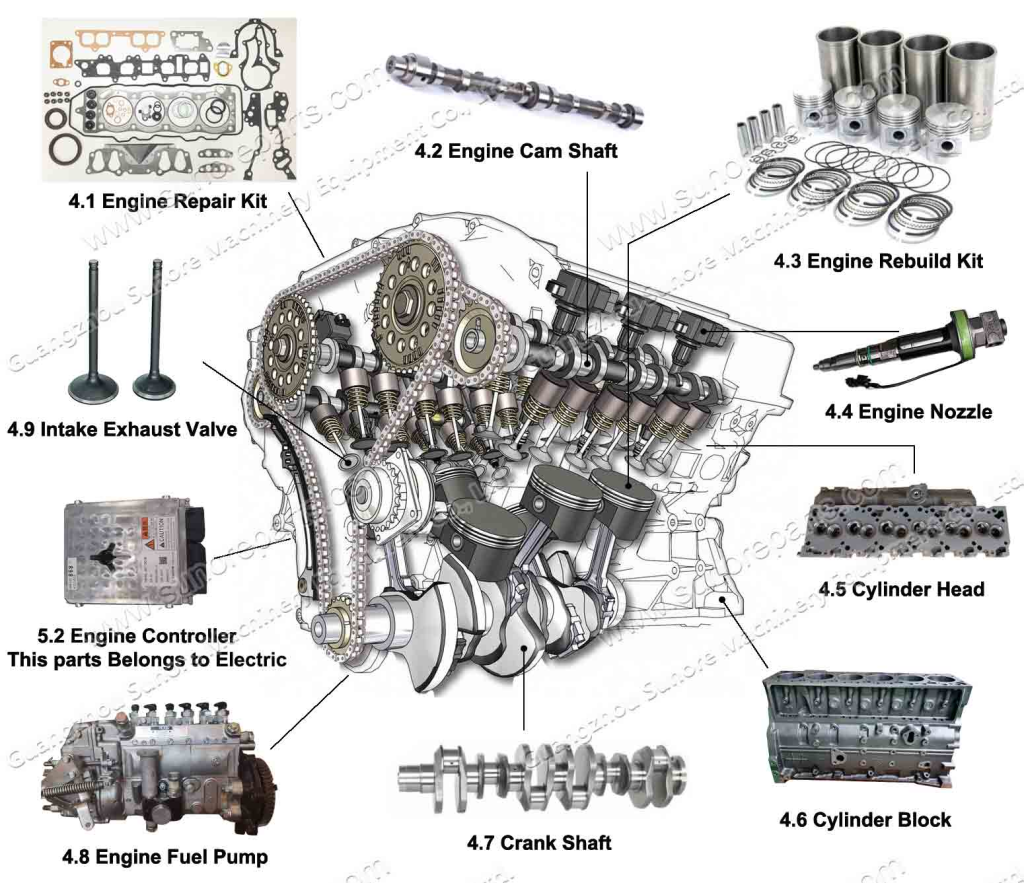excavator engine diagram

The engine is the heart of an excavator, providing the power necessary to drive the machine’s hydraulic system and perform various tasks on construction sites. Understanding the components of an excavator engine diagram is crucial for operators, technicians, and enthusiasts to comprehend the intricate workings of this essential machinery component. Let’s delve into the key components of an excavator engine diagram:

| Component | Function |
|---|---|
| 1. Engine Block | – Houses the cylinders, pistons, and other internal components that generate power. |
| 2. Pistons | – Move up and down within the cylinders, converting fuel energy into mechanical motion. |
| 3. Crankshaft | – Converts the linear motion of the pistons into rotational motion to drive the machine. |
| 4. Camshaft | – Controls the opening and closing of the engine’s valves for fuel intake and exhaust. |
| 5. Cylinder Head | – Covers the top of the cylinders, housing the valves, spark plugs, and other components. |
| 6. Valves | – Regulate the flow of fuel and air into the cylinders and the release of exhaust gases. |
| 7. Fuel Injectors | – Deliver precise amounts of fuel into the cylinders for combustion and power generation. |
| 8. Turbocharger | – Compresses air entering the engine to increase power output by maximizing fuel combustion. |
| 9. Cooling System | – Regulates the engine temperature to prevent overheating and ensure optimal performance. |
| 10. Air Filter | – Removes impurities from the air intake to protect the engine from damage and maintain efficiency. |
By understanding the components of an excavator engine diagram and their functions, operators can effectively maintain, troubleshoot, and optimize the performance of the engine. Regular servicing, monitoring of fluid levels, and adherence to manufacturer guidelines are essential for ensuring the longevity and efficiency of the excavator engine in demanding work environments. Each component in the excavator engine diagram plays a critical role in the overall functionality of the engine, powering the excavator to tackle challenging tasks with precision and power.